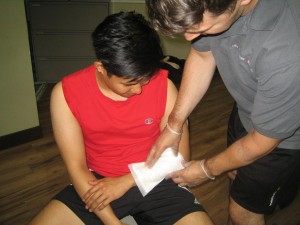There are different methods for wound closure but stitching or suturing is the most common method to repair wounds. The other methods include skin closure tapes, surgical staples and adhesives. The removal of stitches or other skin closure methods is a procedure that many fear. By understanding the different types of skin closure techniques and being familiar on how they work and what to expect upon removal is beneficial.

What are stitches?
Stitches or sutures are mainly used to seal off cuts and wounds in the skin. You can use one in any part of the body, internally and externally. The doctor will sew the skin together using individual sutures and tie a secure knot. The stitches allows the skin to naturally heal. Take note that stitches seal off different types of wounds. Accidental lacerations or cuts are closed using stitches. During surgeries, the doctor uses stitches to tie the ends of bleeding blood vessels as well as closing up surgical incisions.
- Absorbable sutures break down quickly in the tissues and eventually lose their strength in a span of 60 days which no longer requires removal.
- Non-absorbable sutures maintain their strength longer than 60 days. These are mainly used to close the skin or external wounds and require removal once the wound has fully healed.
The standard method of applying stitches is simple. The doctor affixes the suture to a needle. Before stitching, the doctor cleanses the wound with sterile water and peroxide. For cleansing, apply Betadine on the area around the wound. The doctor applies an anesthetic agent to numb the area. The needle with the thread is utilized to sew the edges of the wound together. Once the wound is sealed, a topical antibiotic gel is applied over the stitches and covered with a bandage. It is also important to learn how to take care of sutures. This is possible if you will enroll in a first aid course.
Skin closure tapes
Skin closure tapes can minimize the risk for infection drastically than stitches. It also takes less time to apply on a wound. The best aspect is that there is no need for an injection of an anesthetic. On the other hand, it has its own drawbacks that you should be familiar with. Initially, it is not precise in bringing the edges of a wound together since taping is not suitable on all areas of the body. Parts of the body with hair are not appropriate for taping.
Adhesive agents
Sealing a wound is also possible by using adhesive agents. The doctor applies this to the wound edges similar to glue and keeps the edges together until the healing process starts. This is the latest method in repairing wounds and becoming a popular alternative to stitches, particularly for children. After 5-7 days, the adhesive will simply wear away or falls off.
http://youtu.be/N0H02a06prc
Surgical staples
Surgical staples are useful in closing up different types of wounds. Take note that staples are easy to apply, economical and can prevent infections better than stitches. The drawback of staples is that formation of permanent scars if not properly used as well as imperfect alignment of the wound edges that can lead to improper healing.
FACT CHECK
https://emedicine.medscape.com/article/1836438-overview

